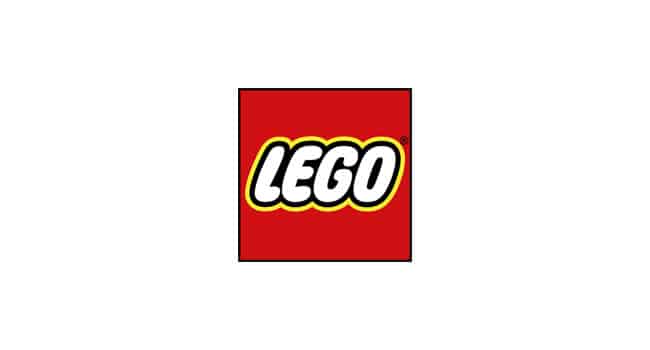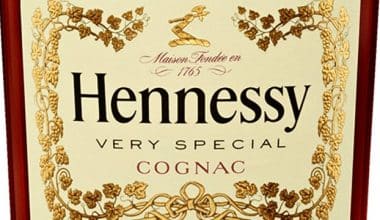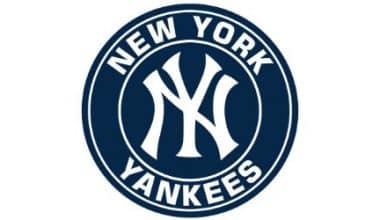Overall, LEGO has had nearly a century of success, growing to be one of the world’s largest toy brands before expanding beyond toys in a variety of innovative ways. But what part did the company’s logo play in its success? We’ll be discussing the history and story behind the LEGO logo in this article.
The LEGO Logo History
In 1934, the original LEGO logo was introduced. However, the design was quite uninteresting, with the words LOGO spelled out in an average, black font. The design would go through various changes over the years before the corporation landed on the one we know today in 1972. With the exception of a small update in 1998 to make the logo more suitable for online display, this red, white, yellow, and black logo has been the face of LEGO since.
Evolution Of The LEGO Logo
The LEGO logo has evolved over time.
The red, white, yellow, and black LEGO logo has become synonymous with one of the world’s top toy makers, but it wasn’t always this way.
Ole Kirk Kristiansen, a carpenter, and joiner founded his company in the Danish village of Billund in 1932, producing stepladders, ironing boards, stools, and wooden toys. At the age of 12, his son Godtfred Kirk Christiansen began working with him in the firm.
1934
Ole’s company and its products were given the name LEGO in 1934, an acronym of the two Danish words “leg godt,” which means “play well.” The first company logo was used on correspondence, shipping labels, and other printed materials, but not on toys.
1936
In 1936, the ink stamp “LEGO Fabriken Billund” was first used on wooden toys.
1939-40
By the time this logo version was launched in 1939 or 1940, the plant had ten employees. For the next fifteen years, it was widely utilized on wooden toys, usually as an applied decal.
The predecessor to the LEGO brick we know today was introduced in 1949 called Automatic Binding Bricks.
Because Ole’s son, Godtfred, wished to build wider recognition of the LEGO name, the Binding Bricks name was replaced in 1951 by LEGO Mursten (literally LEGO Bricks).
Late 1954
This was the first of the oval logos to appear on LEGO Mursten brochures. The company has yet to standardize the brand color, and instances exist in a variety of colors, generally dependent on the color of the catalog.
1955
This logo was initially seen on System I Leg (System of Play) sets. The original appears to be hand-drawn and varies on many early 1955 boxes.
1955-59
The famous dog bone emblem from late 1955 was the first time the design and color were standardized. It was utilized in all toy lines and may be found on both plastic and wooden toys.
The LEGO logo in German (1956)
The modern LEGO brick stud-and-tube coupling method was patented in 1958, the same year that Ole Kirk Kristiansen died and his son Godtfred took over as CEO. Billund had a workforce of 140 people.
1960-65
The first in a series of rectangular/square logos. For the next 13 years, this and numerous versions were used globally.
1965-72
A variant of the 1960 logo with yellow, red, blue, white, and black bars, and the first to display the registered trademark symbol alongside the LEGO name.
1973-98
This logo debuted in 1973, the same year that LEGO began manufacturing and distribution in the United States. It symbolizes an attempt to establish a unified global logo and is the most recognizable iteration of the LEGO brand identity.
1998-present
A slight revision (in LEGO’s words, “graphic tightening”) of the 1973 logo for improved digital (i.e. internet) replication.
LEGO was selected “Toy of the Century” in 2000 by both Fortune magazine and the British Association of Toy Retailers, and the LEGO Group is now owned by the founder’s grandson, Kjeld Kirk Kristiansen, the richest person in Denmark.
Elements of the LEGO Logo Design
The LEGO logo features the word “LEGO” spelled out in an original bubble-shaped font known as “LEGO Font,” bordered by thin black and yellow borders and set against a red, square background.
This background, notably the form, is supposed to be a reference to the company’s iconic square blocks.
The logo’s font is intended to be gentle and playful. Its rounded edge and bubble shape communicate a sense of fun and levity, which is representative of the brand.
Perhaps most significantly, the logo is intended to be visually appealing. When LEGO released its most recent logo, it opted to make it notably more solid than prior incarnations. They also used bright, eye-catching colors like red and yellow.
An appealing presentation is especially vital for products offered to youngsters. Children aren’t the most discerning customers, and a showy presentation is often enough to win them over. In this scenario, the huge size and vivid colors of the LEGO brand work nicely, letting LEGO products stand out on the shelf.
The LEGO Logo’s Popularity
LEGO’s success has relied heavily on branding. While they were the first to manufacture plastic toy blocks, they were far from the last. In addition to their creative creativity, Lego’s brand recognition has helped them stand out from the competitors, and their logo plays a significant role in this regard.
As LEGO has moved into new markets, its branding approach has grown in importance. Many films and computer games built on plastic toys would fail miserably, yet the term LEGO evokes both joy for younger audiences and nostalgia for older ones. LEGO’s foray into media entertainment has been a huge success, thanks in part to this. Of course, the iconic LEGO logo is used to identify all of the brand’s movies and video games.
What Does The LEGO Logo Symbolize?
The brand name and logo text is drawn from the Danish phrase “leg godt,” which translates as “play well.”
The Story of LEGO
LEGO, which debuted in 1932, has grown to become one of the world’s most popular and cherished toys. We look back at the colorful building blocks of history.
When was the last time you had a close experience with a piece of LEGO? Hopefully, it happened around Christmas, when you were seeing your grandchildren’s eyes light up as they unwrapped their must-have Star Wars set, rather than awkwardly underfoot or while cleaning a clogged vacuum cleaner.
But no of how you feel about LEGO right now, one thing is certain: the material is unavoidable. There are more LEGO people (‘mini-figures) than real humans in the world. And there are 62 LEGO parts for each of us. Some of them may have formerly belonged to you.
But it all depends on your age and generation. A wooden bus, lorry, airplane, or pull-along animal was one of the first LEGO toys you might have owned as a child.
The colorful little brick that went on to dominate the world was not presented until 1949, and the gratifying clicking coupling method came almost ten years later, in 1958. The LEGO variety in the 1960s, 1970s, 1980s, and beyond has steadily expanded, allowing each generation to enjoy this creative, amusing toy.
What Is The Slogan For LEGO?
LEGO’s slogan is “Only the best is good enough”.
The History of LEGO
The year 2022 marks the 90th anniversary of the year Ole Kirk Christiansen, a carpenter from a poor farming family in Billund, Denmark, began creating toys. The Great Depression was in full swing, regular carpentry work had dried up, and Ole Kirk needed to find another means to make ends meet. When he realized the miniature prototypes for objects he was trying to make from wood – ironing boards, ladders, and the like – had immense potential as toys, he was inspired. His toys were an instant hit. After two years, he titled his company LEGO by combining the Danish words leg and godt, which imply ‘play well.’
One of the reasons the company succeeded so well was its ability to adapt and pull triumph from the jaws of disaster. For example, during the 1930s yo-yo frenzy, LEGO produced a large number of them for Danish children before the trend died. The factory was left with a vast surplus of unsellable yo-yos. Ole, on the other hand, had the brilliant idea of cutting all the yo-yos in half and using them as wheels for a new toy truck design. It quickly became a best-seller.
LEGO did not begin producing the plastic construction bricks for which it is today famous until 1949. If you had played with such items before then, it would have been the prototype pioneered by a British toymaker named Hilary Page, not LEGO.
LEGO as a Worldwide Conglomerate
Page, a brilliant, caring man who spent a day a week at several nurseries attempting to understand child psychology, is one of the toy industry’s unsung heroes.
His Kiddicraft Company foresaw the Lego boom by a decade. In 1940, he invented his first Interlocking Building Cubes (with characteristic studs on top and hollows on the bottom that allow them to be stacked securely). However, he failed to recognize the design’s versatility and potential.
So, while Page quickly moved on to other, more promising toy lines (miniaturized versions of Heinz foods, Quaker Oats, and even spirits and cigarettes), it was the Danes who turned those bricks into a multimillion-pound global empire. Sales were modest for the first five years, but Ole Kirk was convinced that quality would win out in the end.
His attention to detail was exceptional. According to legend, his son proudly claimed in the early days of wooden toys that he had saved his father a substantial quantity of money. He had only used two coats of varnish on the most recent shipment, rather than the required three. Ole Kirk, on the other hand, was enraged. He dispatched his son to the railway station to retrieve the toys and complete the task properly.
The story has become part of the business lore. On the staff t-shirts of the main LEGO facility in Billund, Denmark, it states, ‘Kan det bedste er godt nok.’ ‘Only the best is good enough.’
The LEGO Vaults
Even more fascinating than the LEGO hotel with its massive LEGO dragon, the LEGOLAND theme park, or the museum, a visit to Billund’s sealed secret room has been known to make grown men cry.
Inside this inconspicuous basement, preserved in gun-metal grey filing cabinets, lies LEGO’s Memory Lane archive, which contains nearly all of the toys created by LEGO throughout the years, packed in their original boxes and organized by year. Often, the last time you saw this precise packaging was when you opened your Christmas gifts years ago. It’s like Proust’s madeleine: everything comes flooding back with tremendous intensity, and you’re a child again for a delightful minute.
LEGO Increases its Product Line
The present generation of children just does not recognize how spoilt they are in terms of options.
Today, LEGO fans have a plethora of products to satisfy their addiction, ranging from large Duplo bricks for toddlers to movie tie-in products (Star Wars, Toy Story, etc.) to themed playsets like Atlantis or girl-targeted Belville (complete with inevitable ponies); and, as they grow more sophisticated, the fiendishly complex Technic construction kits, and the even more challenging Mindstorms (where you can build your own working robot).
If making things isn’t their thing, there are always computer apps or online video games.
Back then, bricks were mostly square and rectangular, and they were used to build dwellings. Most early Lego sets were intended as exercises in town planning, which suited the postwar spirit of rebirth.
They come in metal canisters or cardboard boxes containing a variety of pieces. What distinguished LEGO from competitors such as Meccano was that, while basic instructions were provided, the fundamental idea was to go off-piste and create your own inventions.
Build Anything.
This is the LEGO most of us remember: jumbled-up components from various kits that we put together however we pleased.
This spirit was captured in a popular 1980s TV commercial, which had a Tommy Cooper soundalike providing the narration. It included a stop-motion animation of a Lego mouse morphing into various LEGO models in order to avoid being devoured by a Lego cat. In other words, if you have enough LEGO bricks, you can build almost anything.
You certainly can. The Legoland theme parks, such as the original in Billund, take this to their logical conclusion. It has a scale model of Mount Rushmore’s presidential heads (made of 1.5 million bricks) and a 36-foot-high sculpture of Chief Sitting Bull made of 1.75 million bricks that took two years to make. In 2011, LEGO fans spent two months building a 38-foot-high Christmas tree out of 600,000 bricks at London’s St Pancras station, while others staged tableaux using LEGO mini-figures to re-enact some of the year’s key events, from the Libyan civil war to the Duke and Duchess of Cambridge’s ‘first kiss’ on Buckingham Palace’s balcony.
LEGO’s limitless potential has transformed it into a fun and desirable object for adults to collect and play with, something Lego has embraced in recent years with nostalgic sets such as a Nintendo Entertainment System no doubt aimed at 80s kids (now in their 40s) and a highly detailed 18+ range that includes model cars and beautiful floral bouquets aimed at a distinctly more mature audience.
A Family Friend
Perhaps the major reason LEGO inspires such loyalty is that, despite being a global corporation with 5.8 billion Euros in revenue in 2019, and displacing Ferrari as Brand Finance’s ‘Most Powerful Brand’ in 2015, it still feels less like a ruthlessly commercial brand and more like an old family friend.
LEGO takes considerable care to maintain this warm image. Despite the fact that its initial patented design was a toy gun, it has generally adopted an anti-violence philosophy. For many years (until the late 1980s pirate series), its mini-figures were not permitted to carry firearms. When the idea of a Star Wars product tie-in was first floated, there was substantial opposition from traditionalists who objected to the phrase “wars.”
LEGO Star Wars and Other Licensed Properties
The Star Wars complaints were overturned, and LEGO’s Star Wars kits, along with the Harry Potter ones, are the company’s best-sellers. However, even these measures were unable to avert a near-disaster in 2003, when sales plunged by 29%, Lego reported losses of £217 million, and the company neared bankruptcy.
It was saved by the entrance of its far-sighted, soft-spoken CEO Jorgen Vig Knudstorp, who recognized that Lego needed to return to its roots. He sold off all of the company’s non-core products (properties, theme parks, video game production) and decreased the number of Lego components from 7,000 to 3,000. Simultaneously, he developed three important concepts, dubbed “Moments of Truth,” that LEGO goods should adhere to:
- Does it make a child say, ‘I want this!’ when it is advertised? ’
- Does opening the box make him think, ‘I want more of this?
- Does he return to the toy and continue to play with it a month later? Or does he place it on the shelf and then forget about it?
LEGO and A Changing World
As society becomes more environmentally concerned, LEGO has had to adapt and change with the times. The toymaker has already faced criticism over a multimillion-pound partnership with Shell, which saw branded Shell LEGO petrol stations for sale. Following a Greenpeace campaign in 2014, LEGO declared that they would not extend the contract, therefore terminating a 50-year association.
LEGO has faced calls to make its toys more environmentally friendly as a huge plastic manufacturer (estimated to utilize roughly 90,000 tonnes per year). In 2018, the company announced that a new type of sugar cane plastic would be used for greenery (trees, bushes, and leaves), as well as a plan to be entirely zero waste in production and have all core items created from sustainable materials by 2030.
Current waste-reduction measures include the use of paper pulp trays in place of plastic in Lego advent calendars, as well as paper bags for bricks. Following requests from customers, particularly youngsters, the company aspires to have zero waste packaging by 2025.
“We are encouraged by the millions of children who have advocated for more urgent climate action,” LEGO Group CEO Niels B Christiansen told the BBC in 2020. “We have received numerous letters from children requesting us to eliminate single-use plastic packaging.”
LEGO Replay, a scheme that allows people to box up their unwanted Lego and donate it to children in need, was launched to encourage people to donate Lego sets and pieces for reuse and prevent them from ending up in the landfill. The service is currently only available in Canada and the United States, but Lego intends to expand it. At the time of writing, the initiative has received 136,078kg of Lego.
What Can You Do With Ancient LEGO?
You could be sitting on a little jackpot if you have an attic full of antique LEGO (possibly literally). Hans Brummer, 73, spent 40 years collecting Lego, and his collection is expected to fetch £20,000 at auction later this year (2021). Even if your collection isn’t as large as Brummer’s, there’s a market for it on eBay and other selling sites, and it’ll be scooped up at boot sales.
A LEGO History Timeline
1932-1960
- Ole Kirk Christiansen, a master carpenter, began crafting wooden toys in 1932 after creating small copies of his product design concepts (ladders, iron boards, etc)
- LEGO obtained a plastic injection molding machine in 1947.
- The earliest LEGO construction bricks, known as ‘Automatic Binding Bricks,’ were made of cellulose acetate in 1949.
- The Automatic Binding Bricks are dubbed ‘LEGO Bricks’ in 1953.
- In 1955, Lego’s ‘System of Play’ (also known as ‘Play and Learn’) is introduced, emphasizing the importance of children learning through play.
- 1958 The LEGO brick gets a new patented coupling system that uses hollow tubes on the underside to keep your models from falling apart. LEGO bricks adhere to one another!
- After a warehouse fire destroyed the majority of the company’s wooden toys in 1960, it was determined that the company would focus on plastic toys.
1962-1971
- In 1962, LEGO introduces the wheel and even tries electric motors.
- The first instruction manuals are provided with the packages in 1964.
- The LEGO train system first debuted in 1966, becoming one of the company’s most successful series.
- Legoland Park opens in Billund in 1968, and Lego sales reach over 18 million sets.
- The Duplo system is introduced in 1969, with larger, chunkier bricks ideal for younger children.
- Dollhouses and furnishings are released in 1971 to appeal to girls.
1974-1993
- In 1974, the LEGO figure is born in the ‘Lego family’ sets – role play and characters become a vital component of the whole LEGO experience.
- 1978: The Minifigure is introduced, with poseable arms and legs and a characteristic smile, and the LEGO Castle, LEGO Space, and LEGO City lines are introduced.
- The Educational Projects Department (later renamed LEGO Cacta) is established in 1980 to focus on the educational possibilities of LEGO.
- The LEGO Technic series, an extension of the Expert Builder line, debuted in 1982.
- 1984 LEGO collaborates on programmable bricks with the Media Lab at MIT (Massachusetts Institute of Technology)…
- 1986… the outcome is LEGO Technic Computer Control, the predecessor to LEGO robots.
- The first LEGO World Cup was held in Billund in 1988, with 38 youngsters from 17 countries competing.
- Seymour Papert of MIT is named LEGO Professor of Learning Research in 1989, and the LEGO Pirates are released the same year.
- 1990 The release of a new line aimed at advanced builders. The Three Model Team line featured a highly detailed race car and an off-road vehicle.
- 1993: A collaboration between LEGO and Kabooki A/S results in the release of Lego Kids’ Wear.
1994-2010
- In 1994, LEGO Belville, a mostly pink and purple line focused on girls, is produced. It was eventually superseded by LEGO Friends.
- LEGO Primo was introduced in 1995 for children under the age of two.
- Legoland Park opens in the United Kingdom in 1996, in Windsor.
- Mindscape releases Mindscape’s first video game, Lego Island, in 1997.
- In 1998, the LEGO Group was awarded the exclusive license to manufacture Star Wars goods.
- LEGO Star Wars and Winnie the Pooh Duplo are the first branded Legos released in 1999.
- In 2001, ‘Bionicle’ is introduced, mixing real toys with internet games, and LEGO Harry Potter is released.
- Bionicle: Mask of Light, a feature film based on the Bionicle series, is released on DVD as the first official LEGO film in 2003.
- 2004 The company declares bankruptcy after a £174 million loss, with the vice-president of marketing Mads Nipper attributing the loss to a lack of innovation and failure to react to changing play trends.
- Legoland Parks was sold to theme park behemoth Merlin for £250 million in 2005, and the company refocuses on its main business.
- LEGO board games were released in 2009 for the entire family to enjoy.
- The LEGO Universe game goes online in 2010. It implies that players can have fun with virtual bricks while also having fun with actual, physical bricks at home.
2011-Present
- In 2011, LEGO Ninjago is released and quickly becomes one of the brand’s most popular lines.
- LEGO celebrated its 80th anniversary in 2012, and a new pastel line, LEGO Friends, replaced the now-defunct Belville.
- Warner Brothers releases The LEGO Movie, a feature film based on toys, to critical acclaim in 2014.
- The LEGO Batman Movie and The LEGO Ninjago Movie were released in 2017.
- In 2018, the first sustainable LEGO bricks (made from sugarcane) are manufactured. The sets’ botanical elements – trees, bushes, and leaves – are represented by the pieces.
- LEGO acquires Bricklink, the world’s largest Lego fan network, in 2019.
- In 2020, LEGO introduces several products aimed solely at adults, such as a LEGO White Noise, an app filled with mindful LEGO sounds, and an 18+ range in a sophisticated black box that includes detailed buildings and Star Wars armor, and would later expand into beautifully detailed bouquets of flowers and bonsai trees.
What is the history of the LEGO logo?
The LEGO logo has a long and rich history, dating back to 1932 when the company was founded in Denmark. Over the years, the logo has undergone several changes, but it has always maintained a recognizable and iconic design that has become synonymous with the LEGO brand. The current logo features the company name in bold letters, with a small arrow pointing from the “G” to the “O,” symbolizing the idea of play and creativity.
What are the colors used in the LEGO logo?
The LEGO logo typically features the colors red and yellow, which have been part of the company’s branding since its inception. The bold and bright colors are meant to evoke feelings of joy, excitement, and creativity, reflecting the company’s commitment to inspiring imagination and play. The use of red and yellow helps to differentiate the LEGO brand from other toy manufacturers and to establish a strong visual identity.
How has the LEGO logo changed over time?
The LEGO logo has undergone several changes over the years, with updates made to reflect changing times and trends. However, the company has always maintained a recognizable and iconic design that is recognizable to fans and customers around the world. The most recent changes to the logo have involved updating the typography and color palette, but the core elements of the design have remained unchanged.
What is the significance of the LEGO name and logo?
The LEGO name and logo are incredibly significant to the company and its customers, serving as symbols of the company’s history, values, and vision. The name and logo are meant to evoke feelings of play and creativity, inspiring customers to imagine, build, and explore. The logo has become synonymous with the LEGO brand, and it is one of the most recognizable and iconic logos in the world.
How has the LEGO logo been used in advertising and promotional campaigns?
The LEGO logo has been used in a variety of advertising and promotional campaigns over the years, including television and print advertisements, in-store displays, and online marketing initiatives. The company often uses its logo as a symbol of play and creativity, inspiring customers to explore their imaginations and build their own unique creations. The LEGO logo has also been used in partnership with other brands, including movies and television shows, to help promote the company and its products.
In Conclusion,
Today, LEGO’s popularity is growing as the company finds new methods to delight its customers. As a result, the LEGO logo has become one of the most recognizable trademarks of all time, particularly among younger audiences, and it remains a symbol of the company’s success.
Related Articles
- Concept Testing Methods: Overview & Real-life Examples
- Niche Marketing: Best Practices And All You Need (+Free Research Tips)
- JOBS FOR KIDS UNDER 13
- STAR WARS LOGO: Evolution & All You Should Know!!!
- Spalling: A Comprehensive Guide [+ Quick Tips]






